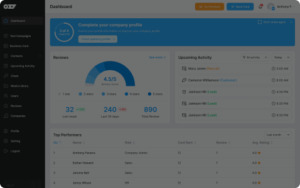With the Covid-19 pandemic (mask, anyone?) and modifications to our normal routines, business people are becoming more innovative and maximizing efficiency. A part of this...

Door To Door Sales, Sales Tips

Michala Farnes
Published January 6, 2021
Cliff Notes
Sales and operations planning, often abbreviated to S&OP, is the cross-functional process of assessing customer buying habits to ensure a company is able to meet the forecasted production, distribution, and purchasing demands required of it.
Key S&OP Stakeholders And Planning Models
Sales and operations planning is crucial to the financial well-being of most companies. As such, it’s important to have all stakeholders present for S&OP process meetings, including sales reps, production, human resources, engineering, marketing, new product development (NPD), inventory/backlog, strategic initiatives, and financial teams.
The sales and operations planning process can be handled in one of two ways, depending on the unique situation your organization finds itself in:
Top-Down Planning: This approach to sales and operations planning focuses on a single sales prediction, upon which management professionals base their strategy and allocate their resources as needed.
Bottom-Up Planning: This approach to S&OP is often used in situations where manufacturing timetables are inconsistent. Rather than basing plans on a specific sales forecast, a strategy is built from the bottom up by assessing what’s needed to produce specific products and/or services within a reasonable timeframe.
7 Benefits Of Sales And Operations Planning
Now that we know what is sales and operations planning, we can discuss why it’s advantageous. Here are seven benefits to the S&OP process:
1. Eliminate Departmental Silos
The real value of S&OP lies in the collaboration opportunities it creates. By eliminating departmental silos, every facet of a company is able to align using common data points, which often leads to increased accuracy, better efficiency, and lower costs.
Organizational collaboration is a hot-button topic in 2021. But unless every department is aligned via a single S&OP process, it’s nearly impossible to achieve.
2. Improved Inventory Management
Inventory management can make or break a business. If your team doesn’t produce enough products, customers will grow impatient and angry as they wait for their orders and your brand’s reputation will suffer. But producing too many products is equally hazardous. A warehouse full of unsold goods can quickly lead to cash flow issues.
Because an S&OP plan analyzes consumer buying habits, as well as a company’s ability to meet potential demand, inventory management greatly improves.

Key S&OP Metrics
Sales and operations planning isn’t a one time event. Your S&OP plan must be monitored and evaluated on a regular basis, as we mentioned. To do so, pay attention to the following metrics:
Your sales and operations planning efforts will only be successful if company leaders buy-in and lead the charge. Without executives, the process will get bogged down as lower-level employees continually seek approvals.
Plus, upper management sets the tone and mentality for the entire company. When every day team members see their bosses making a point to prioritize the S&OP process, they’ll naturally learn to prioritize it too.
Related Articles
With the Covid-19 pandemic (mask, anyone?) and modifications to our normal routines, business people are becoming more innovative and maximizing efficiency. A part of this...
With the Covid-19 pandemic (mask, anyone?) and modifications to our normal routines, business people are becoming more innovative and maximizing efficiency. A part of this...
Take Repcard for a spin
Get your team up and running in less than 3 minutes.
No credit card required • Not ready to signup yet? Click here to schedule a demo



